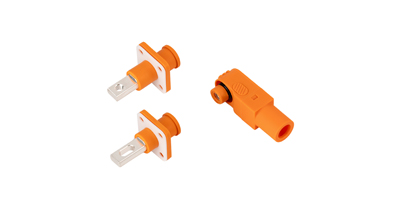Energy storage systems rely on stable electrical connections, yet the temperature of their connectors is frequently overlooked. Many users wonder how temperature impacts connector performance and overall system safety. This article explains the importance of connector temperature management in energy storage devices to avoid problems for buyers.

High temperatures damage connectors in two key ways. First, excessive heat accelerates the aging of materials like insulation layers and metal contacts. Aged insulation loses effectiveness at preventing electrical leaks, increasing the risk of short circuits. Second, heat raises contact resistance between the connector and other components. Higher resistance wastes more energy as heat, creating a cycle that further drives up temperatures and reduces system efficiency. In severe cases, overheating can cause system failures and pose safety hazards.
Low temperatures are equally problematic for connectors. Cold conditions make insulation materials brittle and less flexible. Brittle insulation easily cracks when the system vibrates or connectors are adjusted, exposing internal parts to moisture and dust—both of which lead to electrical issues. Additionally, low temperatures cause slight contraction of metal connector components. This contraction can loosen connections, resulting in intermittent electrical contact. Intermittent contact triggers voltage spikes or power drops, disrupting the normal operation of energy storage systems.
Effective temperature management begins with material selection. Connectors made from heat-resistant materials (such as high-grade insulation plastics and corrosion-resistant metal contacts) better withstand temperature fluctuations. Structural design also plays a role: connectors with effective heat dissipation features (like larger contact surfaces or heat-dissipating fins) release excess heat efficiently. Regular maintenance is another key step. Checking connectors for signs of overheating (discoloration, burning odors) or cold-related damage (cracked insulation) allows users to address issues early. These simple measures protect both the connectors and the entire energy storage system.
Temperature management is vital for connectors in energy storage systems. Both high and low temperatures can damage connectors, leading to performance problems, safety risks, and system failures. Understanding these risks and implementing practical temperature management steps helps keep energy storage systems running reliably.
If you need connectors designed to handle temperature demands in energy storage systems—with materials and structures that ensure stable performance across different temperature ranges—you can visit our Connectors Page on the website. These connectors are engineered to meet the real needs of energy storage setups, helping you avoid common temperature-related issues.